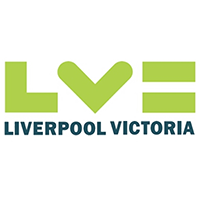Last updated: 10/10/2025


Sagic – Home Insurance with a Purpose
Owned by The Salvation Army, Sagic has been insuring property for over 115 years while supporting vital charitable work.
Protect your home with Sagic – Insuring you. Helping others.


Get insured, manage your policy, and file claims quickly and easily via Lemonade’s award-winning app and website—no paperwork needed.


Protect your home with SAGA


Securing Your Peace of Mind
At Thamesbank Insurance, we deliver bespoke insurance solutions designed to protect what matters most to you.
Choose Thamesbank for a service driven by passion, expertise, and your peace of mind.


Your home deserves Co-op Home Insurance
Terms, conditions, and exclusions apply
*Member discount applied if matched during quote process. Membership offer is not available on optional extras (e.g. home assistance cover).
Home Insurance is offered through Co-op Insurance Services and provided by a select panel of insurers.


All products are Moneyfacts 5 Star Rated for outstanding cover and service.
Why Choose Paragon?


Admiral Home Insurance
We always look out for you by protecting what matters the most.
5 Star rated cover – Our Platinum cover has Moneyfacts highest rating.
24/7 support – With a 24/7 helpline, we’re always here if you need us.
Optional extras – Tailor your cover to suit your needs, with optional extras added to your policy.
Unlimited buildings cover – Including cover for damage to your home’s structure and fittings, garages, outbuildings, and damage caused by flooding or subsidence. Policy limits and exclusions apply.
Cover for your belongings – Up to £150k contents cover to protect your belongings inside your home from theft, vandalism, fire and water damage (only with our Platinum cover). Policy limits and exclusions apply.
Storm protection – Cover for if your home is damaged by extreme weather events like storms, high winds or heavy rain fall. Policy limits and exclusions apply.


Protect your property and belongings from insured events such as fire, storm, flood, escape of water, theft, malicious damage, subsidence, landslip or heave.
What we offer:


Different tiers of cover can be confusing. We like to keep things simple, so we have one comprehensive policy for everyone, whether that’s buildings, contents, or both in one policy. As standard we cover up to £1m for buildings and up to £100k for contents. You can also tailor your policy by adding on extra peace of mind through our range of optional add-on covers, like Home Emergency, Personal Belongings and Legal Expenses.
We always strive to be fair and transparent in everything we do, and that’s why we won’t charge you extra for paying monthly by direct debit, and there are no hidden fees for cancelling or changing something on your policy. We also promise when you renew your policy, you will pay no more than you would as a new customer. Our Home policies are underwritten by Ageas, which gives our customers quality cover they can rely on.


The information above is based on the Alan Boswell Sentinel policy, underwritten by Aviva. Other policies are available.


Dependable home cover for the place that matters most
Insurance is simple when it’s me and LV=
• With Moneyfacts 5 Star rated cover, our Home and Home Plus cover is of the highest quality
• £1 million cover if you need to rebuild your home
• Choose up to £150,000 for your contents cover
• 24-hour emergency helpline if you need help in a hurry


Come to Safeguard Home Insurance for our:


Swinton Insurance aim to make it simple for customers to choose their home insurance cover. Customers can relax knowing their home is protected from loss or damage with home insurance through Swinton, subject to cover level.
Swinton compares prices from a panel of insurers, aiming to provide customers with a quote. Whether they are looking to protect their family home, holiday home or a high-value property, there are various policies available to fit most requirements.
Links to third parties on this page are paid for by the third party. You can find out more about the individual products by visiting their site. Moneyfactscompare.co.uk will receive a small payment either if you click the links or if you use their services after you click through to their site. All information is subject to change without notice. Please check all terms before making any decisions.
DisclaimerThe list of home insurance providers on this page is a selection of services available and gives you an idea of the kind of options available. You can find out more about the individual products by visiting any of the providers listed. All information is subject to change without notice. Please check all terms before making any decisions. This information is intended solely to provide guidance and is not financial advice. Moneyfactscompare.co.uk will not be liable for any loss arising from your use or reliance on this information. If you are in any doubt, Moneyfactscompare.co.uk recommends you obtain independent financial advice.
Buildings insurance and contents insurance are the two main types of cover that come under the broader term of ‘home insurance’. You can buy these policies separately or take out a combined buildings and contents insurance policy.
If you want both types of cover, it’s often cheaper to buy a combined buildings and contents insurance policy than getting them separately.
Buildings insurance provides cover if something happens to the main structure of your property, including any permanent fixtures and fittings. For example, it can cover your walls, floors, roof, windows, doors, pipes and fixed bathroom and kitchen fittings. It may also cover garages, fences, sheds and other outbuildings.
Essentially, anything that makes up your property that you wouldn’t take with you when you move is likely to be covered by buildings insurance.
Your buildings insurance should cover the rebuild cost of your home. Bear in mind this isn’t the amount you paid for your property or its current market value.
Even though buildings insurance isn’t required by law, many mortgage lenders will only finance your property if you have sufficient buildings insurance in place.
Contents insurance covers the items in your home. Anything that you can remove and would take with you if you moved house is likely to be covered under contents insurance.
For example, contents insurance can cover furniture, freestanding appliances, electrical devices, jewellery, money, clothing, pictures, ornaments and many other items. Some policies may also provide cover for freezer food and downloaded content.
Bicycles up to a certain value may also be covered under contents insurance while they’re at home. However, you may need to add cover if you want to cover your bike outside the home and, for more expensive bikes, specialist bicycle insurance may be more suitable.
Buildings and contents insurance policies typically cover you in the event of any unexpected damage caused by:
Home insurance can also provide cover for vandalism and theft.
If your home is uninhabitable, because of flooding, for example, home insurance policies can cover the cover of alternative accommodation.
Some other elements of cover that may be included with more comprehensive policies, or are available to add as optional extras, are:
You are covered up to the limit specified in your policy. Different limits apply to different aspects of your policy so, for example, policies may offer buildings cover up to £500,000 and contents cover up to £25,000. These sums are the maximum you can claim on each policy.
Providers may also set individual cover limits on other elements of a home insurance policy, such as alternative accommodation, legal expenses and replacement keys.
Always check the cover limits of a policy so, if your building or contents are worth more than the limit, you can look for a more comprehensive policy. On the other hand, if you don’t need as high a limit, you can see if you can find a cheaper policy with lower cover limits.
Standard home insurance doesn’t usually include cover for:
The above list isn’t finite, so it’s important to look at the terms of a policy to see exactly what is and isn’t included and to ensure you get the best home insurance for your situation.
Although home insurance isn’t a legal requirement, many people may need to have it and could benefit from taking out cover.
Crucially, homeowners with a mortgage typically need to have buildings insurance as a minimum. Mortgage lenders usually require you to have sufficient buildings insurance in place when you exchange contracts, even though you may not have moved into the property yet.
If you bought without a mortgage or if you’re mortgage free, you don’t necessarily need buildings insurance. However, it’s still recommended to have some form of cover so you’re protected in the event of fire, flooding or any other damage, for example.
Tenants in a rented property don’t need to take out buildings insurance as this will be the responsibility of the landlord. Similarly, leaseholders may not need to arrange buildings insurance as the freeholder will normally be responsible for this. But it’s worth checking with your solicitor if you’re unsure.
However, both tenants and homeowners could benefit from having contents insurance to. Not everyone will want or need this cover, but it can be useful to have if something happens to your belongings, particularly if you own any important or valuable items.
Landlords will typically need buildings insurance, alongside other forms of landlord insurance, on their buy-to-let properties. If you let out a furnished or part-furnished property, you could also consider having contents insurance to cover these items.
The average cost of a combined buildings and contents insurance policy stood at £391 in the second quarter of 2025, according to latest data from the Association of British Insurers (ABI). However, the cost of home insurance can vary considerably, depending on the age, size and location of your property, for example. Your claims history, excess and the level of insurance you choose will also affect the price.
Home insurance premiums have been at a relatively high level over the past couple of years, largely because insurers have been facing higher costs when paying out claims.
The average insurance claim for domestic properties was calculated to be £6,200 in the second quarter of 2025. Weather-related damage continues to be a major reason for claims, with insurers paying out a total of £198 million in claims for homes and possessions affected by storms, rain and frozen pipes, for example, between April and June. Data sourced from the Association of British Insurers (ABI).
No, in fact, the average price of home insurance has edged slightly lower over the first half of 2025. The average cost of a home insurance premium (combined buildings and contents) fell to £391 in the second quarter of 2025, according to the ABI. This is £2 lower than the previous quarter and just £1 higher than the same period one year ago.
Separately, the average cost of a buildings-only policy dropped slightly to £321 in the second quarter of the year while the average cost of contents-only policies stood at £129.
While you can’t change some factors that affect the price of your home insurance quote, such as the size and postcode of your property, below are some tips that could help to reduce the cost of your home insurance premium.
You can get home insurance quotes from multiple providers to find the cheapest and most suitable policy for your requirements. This won’t affect your credit score and you can then buy a policy once you’ve found one that’s right for you.
To get a quote, you’ll need to provide some personal information including your name, date of birth and contact details. You may also need to tell the insurer about claims you’ve previously made on your insurance.
The insurer will also need to know the following information about the property you want to insure:
If you’re getting contents insurance, you’ll need to estimate the total value of your possessions. If you have any particularly valuable items (insurers will set their own threshold), you’ll usually need to declare these separately.
When choosing buildings and contents insurance, you will often be given the option to add extra cover to your policy, such as home emergency cover, accidental damage cover, personal possessions (or belongings) cover, bicycle cover, legal expenses and more.
Our chart above includes some of the top home insurance providers in the market as well as some newer and perhaps less-familiar brands. Look out for the insurers that have received a Moneyfacts Star Rating, as this indicates that they can offer some of the most comprehensive cover and best range of features, based on Moneyfacts’ independent analysis.
It’s worth taking time to look at the different policies available, as the best policy for one individual may not be the most suitable for another person. When comparing policies, the cost, cover limits and optional extras available are just some of the features to look at to help you find the right insurance for you and your property.
It’s important to provide an accurate figure for the rebuild cost of your property and for the value of your possessions. If you underestimate the value, you may find you’re not fully covered if you have to make a claim.
Buildings insurance is one type of home insurance. Home insurance is an umbrella term for buildings insurance (which covers the main structure of your property) and contents insurance (which covers your personal belongings inside). You can buy these policies separately or as a combined policy.
The rebuild cost is the amount it would cost to build your home from scratch if it was completely destroyed. It is not the same as the sum you bought it for or the sum you could sell it for. A surveyor can estimate the rebuild cost or, alternatively, you could use the free calculator from the Building Cost Information Service.
Many insurers state that, depending on the nature of your work, working from home won’t affect your home insurance policy. However, if you run a business from home, this could affect your cover and you may need separate business insurance. If you’re not sure whether your working situation will affect your home insurance policy, it’s worth checking with your insurer.
A certain amount of cover for gardens and outdoor spaces is often included in home insurance. This may be able to provide protection for sheds, gates, fences, plants, garden furniture, tools and more. However, the exact cover offered will vary between providers and is likely to come with a range of exclusions. It’s always worth checking the terms of an insurance policy to see what cover it provides for your outdoor areas.
While home insurance isn’t legally required, having sufficient cover can offer peace of mind should the worst happen.
If you’re a homeowner with a mortgage, your lender typically requires you to have a buildings insurance policy in place. It’s up to you whether you choose to take out a contents insurance policy. Tenants don’t need buildings insurance as this is the responsibility of the property owner, but they could choose to have contents insurance to cover their belongings.
It may be possible to transfer your current home insurance to your new property when you move, but this won’t happen automatically and it may not always be an option. You’ll need to contact your insurer and, if it is allowed, you may need to pay a fee and your premiums are likely to change. This is because your new property could have a different value and risk profile and have different features than your current property.
But, even if it’s possible to move your current policy, it’s still worth comparing cover from other providers to see if you can get better value insurance for your new home.
To make a claim on your home insurance, you should contact your insurer as soon as possible. You may be able to do this online or over the phone, and you’ll need to provide details such as your policy number and information about what has happened. The insurer will typically also need to see photos or other evidence of the issue. Depending on the nature of your claim, it may take a while for the insurer to process it, conduct its own investigation and, if successful, pay out the necessary sum.
If a crime has been committed, such as theft, make sure you contact the police.
It’s possible to cancel your home insurance. Policies should have a 14-day cooling off period during which you can cancel your home insurance and receive a full refund (minus any costs). If you cancel after this period, you may be able to receive a refund for any cover you’ve paid for and haven’t used, but this will depend on the provider. Cancellation fees may apply.
There’s no penalty if you decide not to renew your home insurance policy and move to another provider, for example.
Before cancelling a policy, it’s important to ensure you still have buildings insurance if your mortgage lender requires it, for example.
You may also be interested in landlord insurance. Find out more about the best way to insure your buy-to-let property.